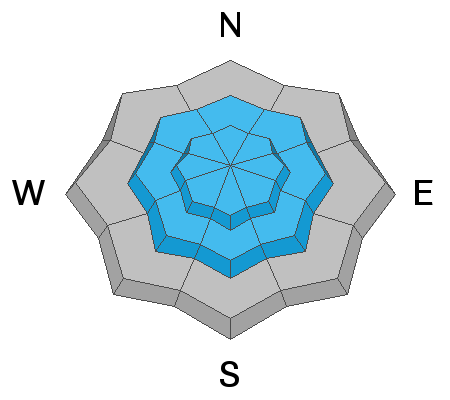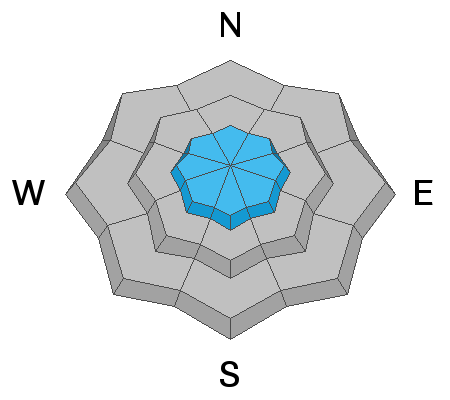This morning: Under mostly clear skies, there is a temperature inversion in the mountains ranging from the low teens F at ridgelines and in the single digits at trailheads. Winds increased overnight, and are blowing from the northwest averaging 5-15 mph gusting to the mid-20s at mid-elevations, at upper elevation ridgelines wind speeds are averaging 20-25 mph with gusts in the upper 30s mph. Overnight upper elevation ridgelines got gusts up to 55 mph.
Today: Skies will become mostly sunny, and the Northwest winds will continue throughout the day. Expect mountain temperatures to climb into the upper 20s and low 30s F. The northwest winds will average 5-15 mph, with gusts up to 25 at mid-elevations. At upper elevation ridgelines, the winds will average 20-30 mph and gust up to 40 mph this afternoon.
Looking ahead: The weekend will have dry and cool weather. Another storm should arrive late Sunday night or early Monday morning. This one looks more promising.
Wednesday's storm capped a wide variety of snow surfaces which will determine future avalanche conditions as more new snow accumulates. Between Tuesday evening and Thursday morning, 5-9.5 inches of new snow (0.20-0.41 H2O) has fallen, favoring Little Cottonwood Canyon. There is an incredible amount of variability in the old snow surface which consists of weak facets, crusts of varying thicknesses and hardnesses, wind-eroded and sculped snow, and some areas are simply covered in tracks.
The challenge in the future is that having such a wide variety of snow surfaces means there will be a wide variety of stability from slope to slope and the pattern will be complex and tricky to map. With more cold temperatures in the forecast, the new snowfall may begin to weaken and facet at the surface, continuing to add to the wide variety covering the range. Pay attention to the changing snow surfaces before the next storm system.
Mark and Trent went into White Pine yesterday and found a wide variety in the now buried snow surfaces, find the full observation
HERE.
Yesterday, ski resorts and backcountry travelers reported easy sluffing and loose dry avalanches within the new snow, and very few sensitive wind drifts at the upper elevation ridgelines.
One party did trigger a small wet loose avalanche on
Superior around 10:15 AM when the sun came out. These avalanches occurred in the Two Trees zone, at 9700' on an East aspect. It broke 6" within the cold new snow and 20' wide.
Greg Gagne's Week in Review is published and can be found
HERE.











